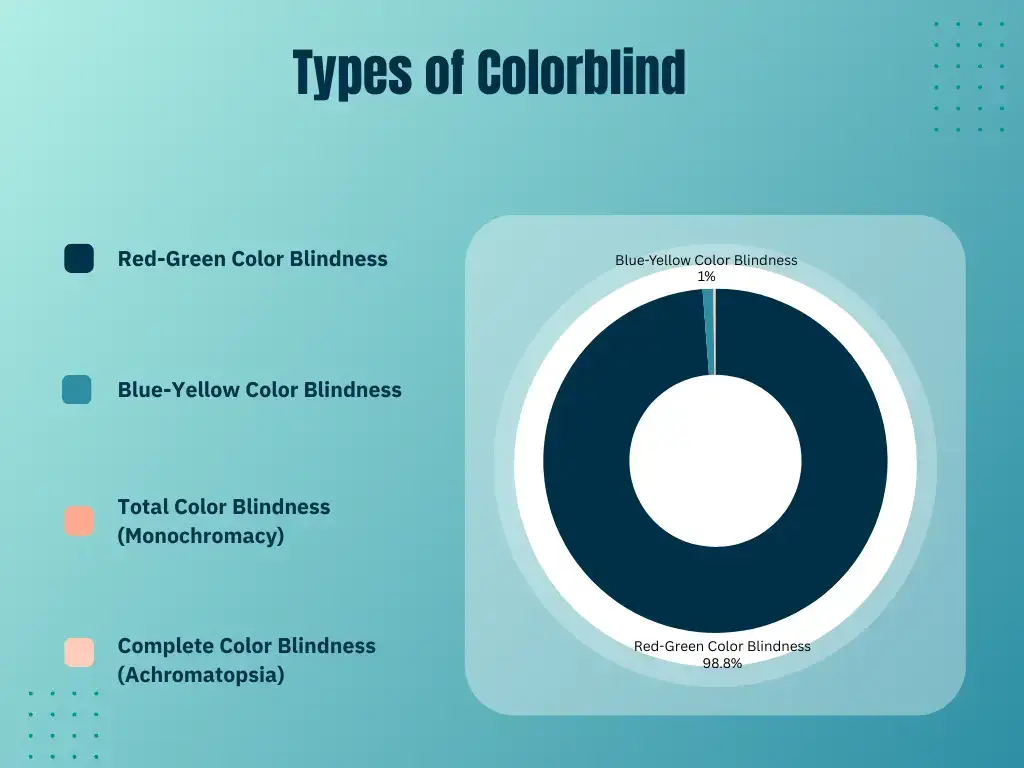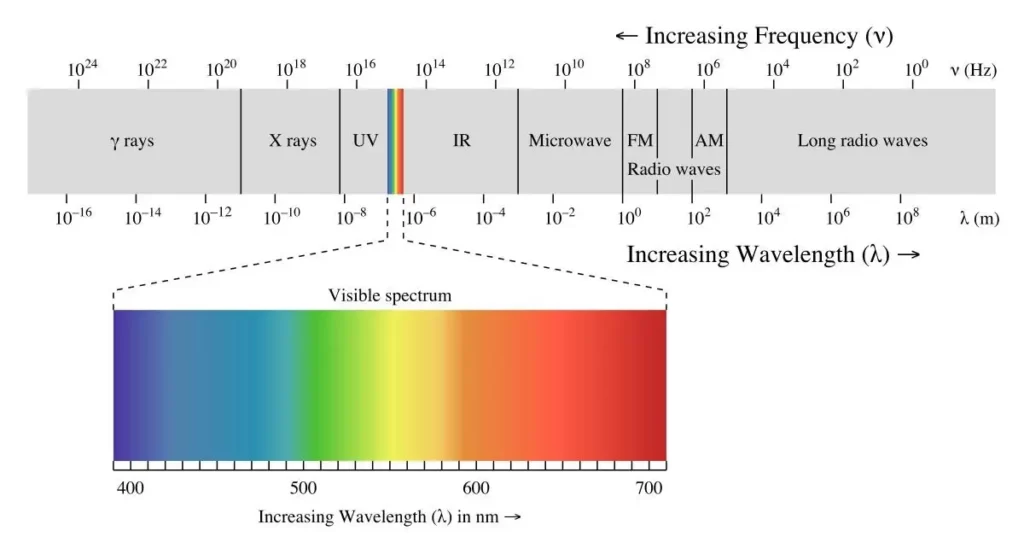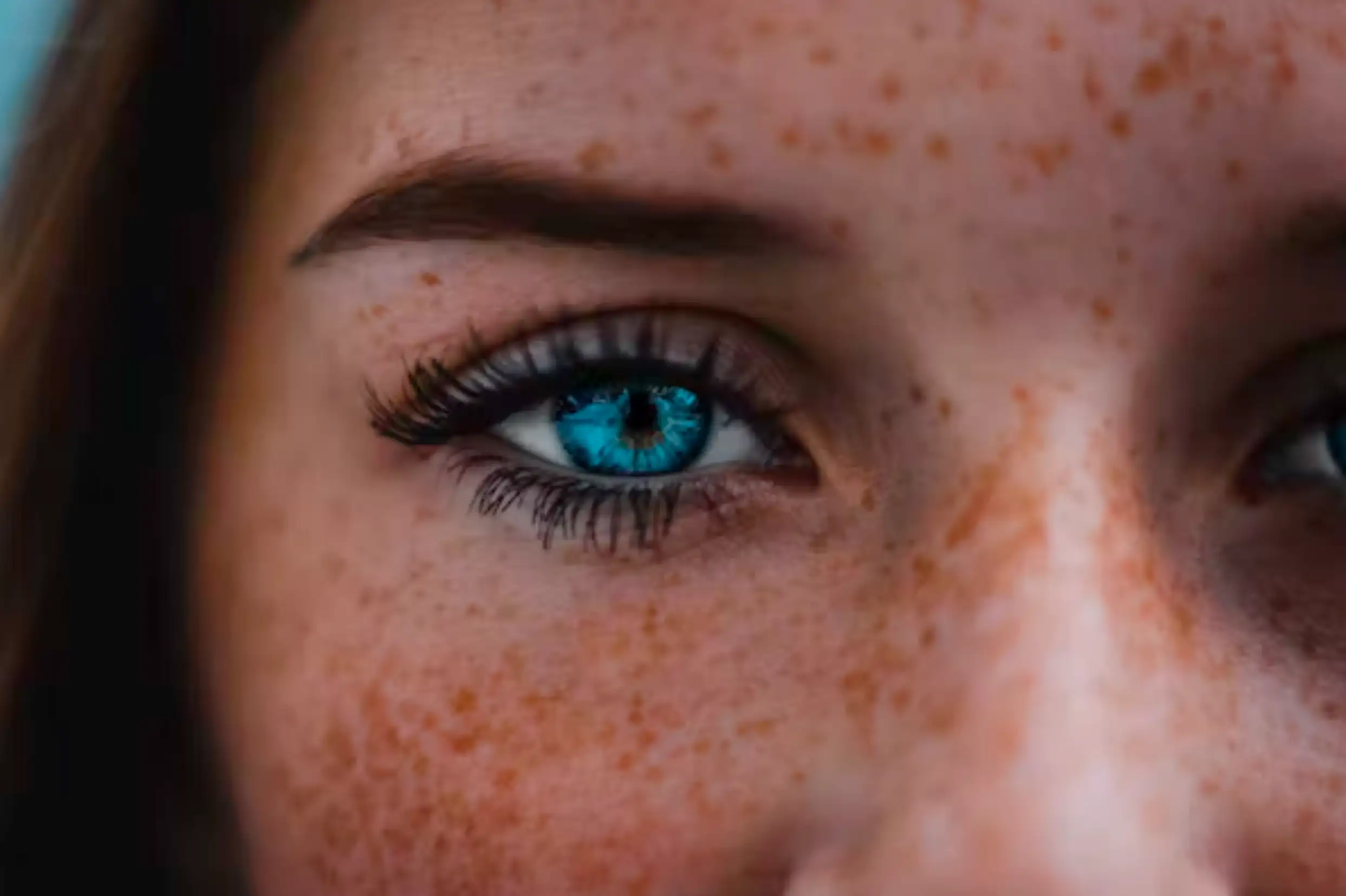How to Correct Color Blindness: A Complete Guide 2025
Color blindness affects millions of people worldwide, altering how they perceive colors in everyday life. This condition is mostly hereditary and involves difficulty in distinguishing certain colors, particularly reds and greens. How to correct color blindness,The most effective tools for managing this condition are colorblindness glasses, which enhance color distinction, especially for those with moderate red-green color vision deficiency.
These glasses, though not a cure, offer valuable help by improving the wearer’s ability to differentiate between colors in various situations. Lifestyle adjustments and technological aids, like specialized apps, also assist individuals in navigating a color-centric world. By using these resources, those affected can enhance their daily experiences and overcome challenges associated with the condition.
Though complete correction of color blindness remains elusive, ongoing research and technology continue to seek improved solutions. Understanding these advancements helps increase awareness and support for color vision deficiency, in hopes of offering better adaptations and tools in the future.
Key Takeaways
- Colorblindness glasses help improve color differentiation.
- Lifestyle adjustments and apps assist with color vision challenges.
- Ongoing research aims to develop better solutions for color blindness.
Understanding Color Blindness
Color blindness, or color vision deficiency, affects how individuals perceive colors. It is characterized by the inability to distinguish between specific colors, often impacting daily activities and quality of life. The condition can be caused by genetic or environmental factors, and differences in cone cells play a significant role in how colors are perceived.
Types of Color Vision Deficiency
Color vision deficiency varies in severity. The most common form is red-green color blindness, which includes deuteranomaly and protanomaly. These impair red-green color perception. Deuteranopia and protanopia are more severe forms in this category, leading to reduced functionality of certain photopigments.

The blue-yellow color deficiency, though rarer, includes tritanomaly and tritanopia, affecting blue-yellow color differentiation. Total color blindness, or achromatopsia, results in seeing only shades of gray and indicates the absence of cone cells or their functioning. Some may experience monochromacy and blue cone monochromacy, affecting color perception even further.
Genetic and Environmental Factors
Genetics often determine color vision deficiency. Many conditions are inherited, generally passed down through the X chromosome, affecting more males than females. An example is red-green deficiency, which is prevalent due to genetic transmission.
Environmental factors, although less common, can include exposure to certain chemicals or medications and illnesses affecting the optic nerve or retina. While these factors are not as frequent as genetic causes, their impact on color vision deficiency is significant and may lead to temporary or permanent changes in color perception.
How Cone Cells Affect Color Perception
Cone cells, located in the retina, are crucial for color perception. Each type of cone cell contains photopigments that determine sensitivity to specific wavelengths of light—typically red, green, or blue. Abnormalities or dysfunction in these cones lead to color vision deficiencies.

In conditions like deuteranomaly and protanomaly, cones are present but do not function correctly, altering the perception of red and green colors. Total absence or malfunction of cones results in more severe conditions like achromatopsia, limiting individuals to a grayscale vision. Treatments, such as gene therapy, aim to restore some functionality by targeting these photopigments, offering hope for individuals with color vision deficiencies.
Identifying Color Blindness
Identifying color blindness involves recognizing difficulties with color perception, such as trouble with traffic lights or distinguishing between certain hues. Eye exams and specific color blindness tests are crucial in diagnosing this condition.
Color Blindness Tests
Color blindness tests are essential in diagnosing color vision deficiency. The most common test is the Ishihara test, which uses a series of plates with colored dots. Individuals with normal color vision can discern numbers or patterns from the dots, while those with color blindness may not see these clearly.
Another method is the Farnsworth-Munsell 100 Hue Test. This involves arranging colored caps in a sequence. People with color blindness may struggle with this task, showing areas where their color perception is weak.
Advanced eye exams may also test color discrimination using digital technology. These tests help pinpoint the type and extent of color blindness. Identifying these limitations accurately is crucial for managing the condition effectively and exploring available aids or tools.
Solution for How to Correct Color Blindness
Correcting color blindness involves using various tools and advancements. These methods include specialized eyewear, contact lenses, technology, and ongoing gene therapy research. Each option offers different benefits depending on the type and severity of the color vision deficiency.
Special Glasses
Special glasses, such as those brands made by Covisn,Enchroma, are designed to improve color perception for some people with color blindness. These glasses work by filtering out overlapping color wavelengths, which helps the brain better distinguish between colors.
Though effective in many cases, these glasses do not work for everyone. They are especially useful for those with red-green color blindness but might not help individuals with a complete absence of certain photoreceptors. It’s important to try these glasses to see if they match individual needs, keeping in mind that experiences can vary significantly.
Color Corrective Contact Lenses
Color corrective contact lenses provide another option for those with color vision deficiencies. These lenses are crafted to enhance color perception by altering the colors that reach the eye. ColorKinds and similar brands offer lenses designed for various lighting conditions, including both outdoor and indoor environments.
While they can offer a more discreet solution compared to glasses, the effectiveness of contact lenses can be different depending on individual eye care needs. It’s crucial to consult with an eye care professional to determine suitability and fit. Those considering this option should weigh the pros and cons regarding comfort and the level of improvement in color recognition.
Software and Apps
Software and apps have been developed to assist individuals with color blindness in interpreting colors more accurately. These tools often include features like color correction filters and digital overlays that adjust screen colors to make them more distinguishable. Some applications are designed to support interactions with digital content.
| App Name | Description | Support Platform |
|---|---|---|
| Color Blind Pal | This app helps colorblind users identify colors in real-time using their smartphone camera. | Ios,Andorid,Mac |
| Color Oracle | A color blindness simulator that shows how images look to people with different types of color blindness. | Mac,Windows,Linux |
| Chromatic Vision Simulator | This app simulates how colors appear to people with different types of color blindness, allowing users to see the world through their eyes. | Ios,Andorid |
| Color Blindness Test | This app provides a test to determine the type of color blindness and offers tips and tools for managing it. | Ios |
| VisionSim | An app that allows users to simulate how colors are perceived by those with color blindness. | Ios |
| Color Identifier | This app uses your device's camera to identify colors and provide their names, helping users navigate color-related tasks. | Ios |
| Color Blindness Helper | This app assists users in identifying colors and provides information about color blindness. | Andorid |
| Chromatic Vision Simulator | This app is a color vision simulation tool which simulates the color vision of color vision deficiencies | Ios |
| Sim Daltonism | An app visualizes colors as perceived by colorblind individuals. Point your camera to see the world through their eyes and enhance accessibility in designs. | Ios,Mac |
| Red Stripe | Red Stripe helps colorblind individuals differentiate colors in nature, urban settings, or on screens, revealing details previously unseen. | Ios,Mac |
By using these technologies, people with color blindness can improve their interaction with devices by tailoring their visual display settings. These tools can be particularly helpful in work or entertainment environments where distinguishing colors is necessary. Users should explore various options to find which apps and software best meet their needs.
Gene Therapy Research
One promising area for more permanent correction is gene therapy research. Scientists are exploring the potential to alter or repair genes associated with color vision deficiencies. Experiments like those conducted at the University of Washington are investigating ways to address red-green color blindness through genetic means.
While still largely experimental, these advancements hold the potential to provide a long-term solution for those affected. Progress in gene therapy could lead to breakthroughs that significantly change how color blindness is treated in the future. It is an exciting field to watch, offering hope for more comprehensive treatments down the line.
Practical Challenges
Color blindness brings various practical difficulties in daily life. These challenges range from identifying common objects to dealing with emotional effects and adapting in professional environments.
Everyday Challenges of Living with Colorblindness
Colorblind individuals often face difficulty interpreting traffic lights, leading to confusion on the road. They might struggle with shopping, particularly when choosing fruits, clothes, or items that require distinguishing colors.
Technology can assist; apps providing color identification can mitigate some challenges.
Memory strategies, like memorizing traffic light order, are also helpful. Addressing these everyday hurdles requires creative solutions and a deep understanding of individual needs, allowing them to navigate a colorful world more confidently.
Colorblindness and Mental Health
The emotional and psychological impacts of color blindness are significant. It can lead to feelings of isolation or frustration, especially when others fail to understand the condition’s impact. Emotional support, including counseling or support groups, might benefit those struggling. Coping mechanisms, like focusing on what they can perceive rather than what they cannot, are important. Understanding and acceptance from family and friends play a crucial role in mental well-being.
Colorblindness in the Workplace
In the workplace, colorblindness can pose unique obstacles. Jobs that rely heavily on color distinction, such as graphic design, might be challenging. Employers should foster workplace inclusivity, offering accommodations such as customized software or labeling systems. Education about color blindness can lead to better teamwork and create a more supportive environment. Opportunities for job success increase when these tools and practices are effectively implemented.
Colorblindness and Education
Colorblind students may face challenges in the classroom when colors are used in instruction materials. Teachers can help by modifying educational strategies. Using high contrast visuals or patterns instead of relying solely on color can make a big difference. Classroom accommodations like alternative test formats or additional time can also help in leveling the playing field. Creating an inclusive educational environment is crucial for their academic success.
Fashion Tips for Colorblind Individuals
Fashion can be a challenge for those with color blindness. Choosing clothes can be confusing when similar shades are indistinguishable. Using a simple color palette simplifies choices and ensures coordination. Keeping a collection of neutral clothing items allows for versatile combinations. Some individuals find benefit in using apps or services to identify colors accurately. Fashion doesn’t have to be stressful; these strategies can reduce confusion and enhance personal style.
Famous People with Colorblindness
Colorblindness, or color vision deficiency, affects numerous well-known individuals across different fields. Their success stories continue to inspire many.
Notable Individuals
- Neil Young: The acclaimed musician, known for his contributions to rock and folk music, is colorblind. His creativity remains unaffected, showcasing that talent and vision can transcend color limitations.
- Mark Zuckerberg: The founder of Facebook is red-green colorblind. This condition influenced his design choices, leading to Facebook’s distinct blue color scheme, which he can see best.
- Bill Clinton: This former U.S. President has mentioned his colorblindness in interviews. Despite this, his political career and public service have been impactful and significant.
Colorblindness hasn’t stopped these individuals from achieving greatness. Artists, athletes, and leaders have found ways to adapt to their unique perspectives.
Their stories demonstrate that color vision deficiency doesn’t have to be a barrier to success. These figures have embraced their condition, using it as motivation rather than a setback.
Future Research and Developments in Colorblindness Treatment
Exciting advancements are being made in the field of colorblindness research. One promising area is gene therapy for color vision deficiency, which aims to fix the genetic causes of the condition. This approach has shown success in animal models, including monkeys, and may soon advance to human trials. Gene therapy could potentially offer a one-time treatment solution.
Another area of interest is the use of specialized lenses. These lenses are designed to alter the way light enters the eye, helping users better distinguish between certain colors. Such lenses, including specialized corrective lenses, may not provide a permanent cure, but they significantly enhance daily life for many people.
Additionally, advancements in technology, like 3D printing, are being explored to create custom devices that further aid color perception. These innovations could make colorblindness correction more accessible and personalized to individual needs.
Researchers are also exploring one-shot treatments that could potentially make a lasting difference. The development of a single injection option is underway, offering hope to many who experience color vision deficiencies. This treatment has not yet begun human trials but represents a promising future direction for effective solutions.
Frequently Asked Questions
Color blindness affects people’s ability to see colors accurately. There are questions about the effectiveness of corrective measures and the prevalence of this condition.
Do color blind glasses actually work?
Color blind glasses can help some people differentiate colors better. These glasses filter certain wavelengths of light, which may enhance color perception. They work differently for each person, and not everyone will see a significant improvement. The effectiveness depends on the type and severity of color blindness.
How common is color blindness?
Color blindness is more common in men than in women. Approximately 8% of men and 0.5% of women have some form of color vision deficiency. Red-green color blindness is the most prevalent, while other types like blue-yellow deficiencies and complete color blindness are less common.
Can color blindness be corrected?
NO. there is no definitive cure for color blindness. However, tools like color-correcting glasses can help individuals perceive colors more accurately, though they do not completely correct the condition.
How can I improve my color blindness naturally?
There are no natural methods to improve color blindness. While some individuals may use color-correcting lenses or apps to assist with color identification, these are not considered natural remedies.
Is color blindness a disability?
Yes.Color blindness can be considered a disability, particularly if it significantly impacts daily activities or job performance. Its classification may vary based on context and severity.
What jobs can’t you do with color blindness?
Certain professions, such as pilot, electrician, graphic designer, and certain medical fields, may have restrictions for individuals with color blindness due to the need for accurate color perception.
Does insurance cover color blind glasses?
Coverage for color blind glasses varies by insurance provider and plan. It’s essential to check with your specific insurance company to determine if these glasses are covered.
What trauma causes color blindness?
Color blindness is primarily a genetic condition, but it can also result from trauma to the eye or brain, certain diseases, or exposure to toxic substances.
Has anyone been cured of color blindness?
Currently, there is no known cure for color blindness. Some advancements in gene therapy are being researched, but they are not yet widely available or proven.
Can lazy eyes cause color blindness?
Lazy eye (amblyopia) and color blindness are separate conditions. However, if a lazy eye is caused by an underlying issue that also affects color perception, it could lead to difficulties in color recognition.
What jobs can colorblind people not do?
Colorblind individuals may face challenges in careers that require precise color discrimination, such as aviation, electrical work, graphic design, and certain medical roles like radiology.
Is there a surgery to fix color blindness?
As of now, there is no surgical procedure to cure color blindness. Research into potential treatments is ongoing, but no definitive surgical options are available.
Which two colors cannot be identified in color blindness?
The most common types of color blindness involve difficulty distinguishing between red and green hues, while blue-yellow color blindness affects the ability to differentiate between blue and yellow.
What is the main cause of color blindness?
The primary cause of color blindness is genetic mutations affecting the cone cells in the retina responsible for color perception. It is often inherited in an X-linked recessive pattern.
What vitamin deficiency causes color blindness?
There is no specific vitamin deficiency that causes color blindness. However, deficiencies in certain nutrients, like vitamin A, can affect overall vision.
Is color blindness more common in males or females?
Color blindness is significantly more common in males than females, with approximately 1 in 12 men affected compared to 1 in 200 women.
Can you be in the FBI if you’re color blind?
The FBI has specific vision requirements, including color vision tests. Color blindness may disqualify individuals from certain roles, particularly in law enforcement.
Can two normal parents have a color blind child?
Yes, two parents with normal color vision can have a colorblind child if they carry the gene for color blindness, particularly if the child is male, as the condition is often inherited in an X-linked manner.
Is there a surgery to fix color blindness?
There is currently no surgical option to correct color blindness. Research is ongoing, but no established surgical treatments exist at this time.








